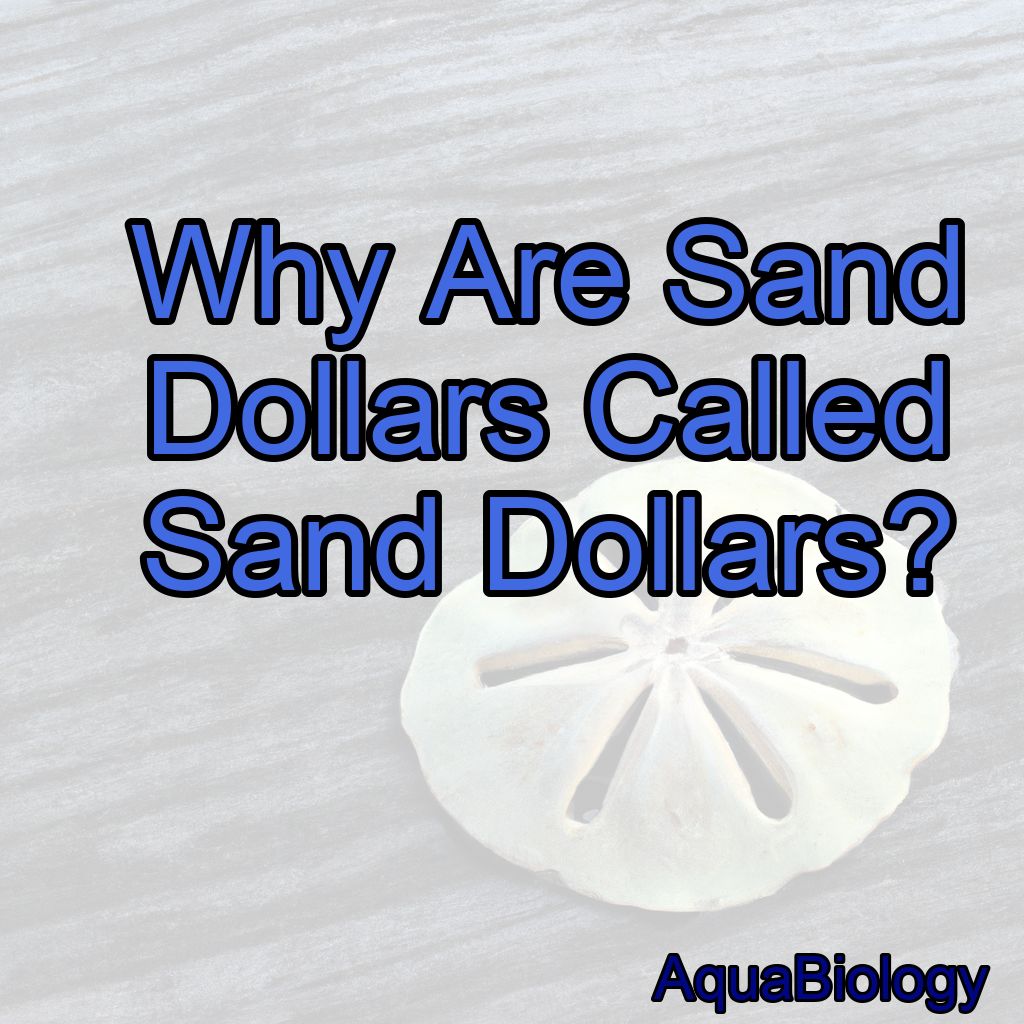As a marine biologist, I have always had a fascination with sand dollars.
Sand dollars are called sand dollars because their round, flat shape and unique pattern resemble a large, old-fashioned silver dollar coin found in the sand.
These iconic echinoderms can be found all over the world, and their unique shape and intricate design make them a favorite of beachcombers and collectors everywhere.
But have you ever wondered why they are called sand dollars?
In this blog post, we will explore the origins of this name and what makes these creatures so special.
The Shape of a Sand Dollar
Sand dollars are flat, disc-shaped creatures that are about the size of a silver dollar. They belong to the class Echinoidea and are related to sea urchins and starfish.
The top of a sand dollar is covered in a layer of tiny spines, which give it a rough texture. These spines are used for protection against predators and also help the sand dollar to move along the ocean floor.
The bottom of a sand dollar is smooth and has a unique pattern of five petal-like structures that radiate out from the center. These structures are called ambulacra, and they contain the sand dollar’s tube feet, which it uses to move and to capture food.
The Origin of the Name
Now, let’s get to the heart of the matter: why are they called sand dollars?
The answer is simple: their shape and color resemble that of a silver dollar.
When early settlers in North America first encountered these creatures, they noticed their round shape and the fact that they were often found buried in the sand.
They started calling them “sand dollars,” and the name has stuck ever since.
Habitat and Distribution
Sand dollars can be found in shallow ocean waters all over the world, from the tropics to the Arctic.
They prefer sandy or muddy bottoms, where they can bury themselves to avoid predators and to feed.
Sand dollars are particularly abundant along the coasts of North America, where they are often collected for their beauty.
Life Cycle and Reproduction

Sand dollars reproduce sexually, with males and females releasing their gametes into the water.
Fertilization occurs externally, and the larvae that develop from the eggs drift with the currents for several weeks before settling on the ocean floor.
Once they have settled, they begin to develop their characteristic shape and spines.
Sand dollars can live for up to ten years, and they grow by shedding their exoskeleton and producing a new one.
Importance to the Ecosystem
Sand dollars play an important role in the ocean ecosystem.
They are herbivores, feeding on small particles of algae and other organic matter that they find on the ocean floor.
In turn, they are preyed upon by a variety of animals, including crabs, starfish, and birds.
Their shells also provide homes for other creatures, such as hermit crabs and small fish.
Threats and Conservation
Like many marine species, sand dollars are facing threats from human activity and climate change. Overfishing, pollution, and habitat destruction can all have negative impacts on sand dollar populations.
In addition, ocean acidification and rising sea temperatures can affect their ability to build their shells and survive. It is important that we take steps to protect these creatures and their habitats, so that they can continue to play their important role in the ocean ecosystem.
Conclusion: 5 Facts about Sand Dollars
So, why are sand dollars called sand dollars?
In summary, the name comes from their shape and color, which resemble that of a silver dollar.
Here are five additional facts about sand dollars that you may not have known:
1. Sand dollars are related to sea urchins and starfish, and they belong to the class Echinoidea.
2. They are herbivores, feeding on small particles of algae and other organic matter that they find on the ocean floor.
3. Sand dollars can live for up to ten years, and they grow by shedding their exoskeleton and producing a new one.
4. Their shells provide homes for other creatures, such as hermit crabs and small fish.
5. Sand dollars are facing threats from human activity and climate change, and it is important that we take steps to protect them and their habitats.
FAQs
Is it rare to find a sand dollar?
It depends on the location and time of year, but in general, sand dollars are not considered rare.
Is it common to find a sand dollar?
Yes, it is common to find a sand dollar on sandy beaches and in shallow waters of oceans and seas around the world.
What is inside a dead sand dollar?
Inside a dead sand dollar is a dried-up and empty shell.
How much is a dead sand dollar worth?
I cannot speak on everyones behalf, as I do not encourage the buying or selling of dead sand dollars as it may be illegal in some areas.
Additionally, their worth is subjective and varies depending on factors such as size, condition, and rarity. It is best to appreciate them for their natural beauty and leave them in their natural habitat.
Is it illegal to keep dead sand dollars?
It is illegal to keep dead sand dollars in some states and countries, as they are protected under conservation laws.
It is important to check local regulations before collecting or keeping any marine life.
What happens when a sand dollar dies?
When a sand dollar dies, its body dries out and decomposes, leaving behind its hard, white skeleton or test.
The test may wash up on shore and become a collectible item for beachcombers.




